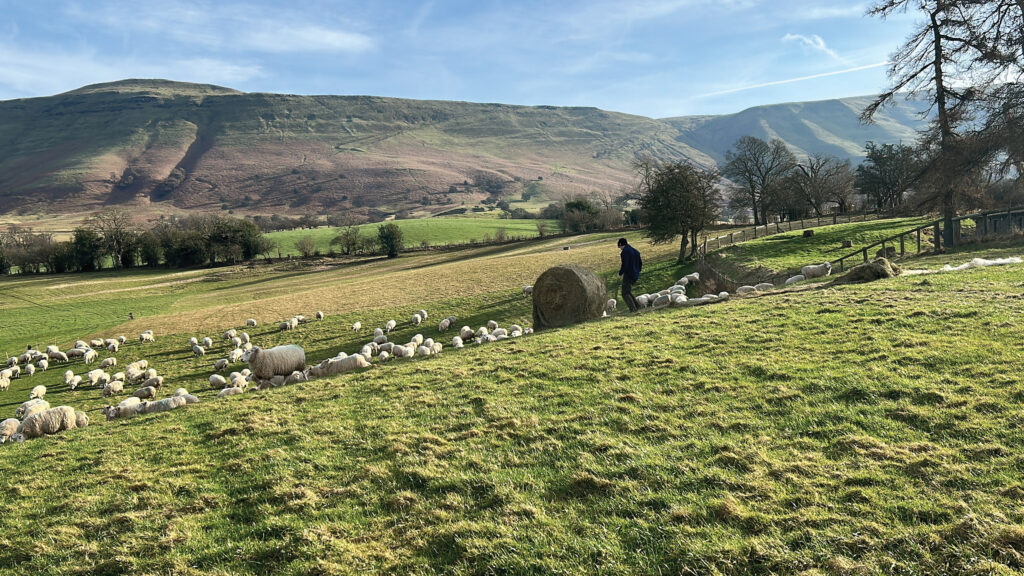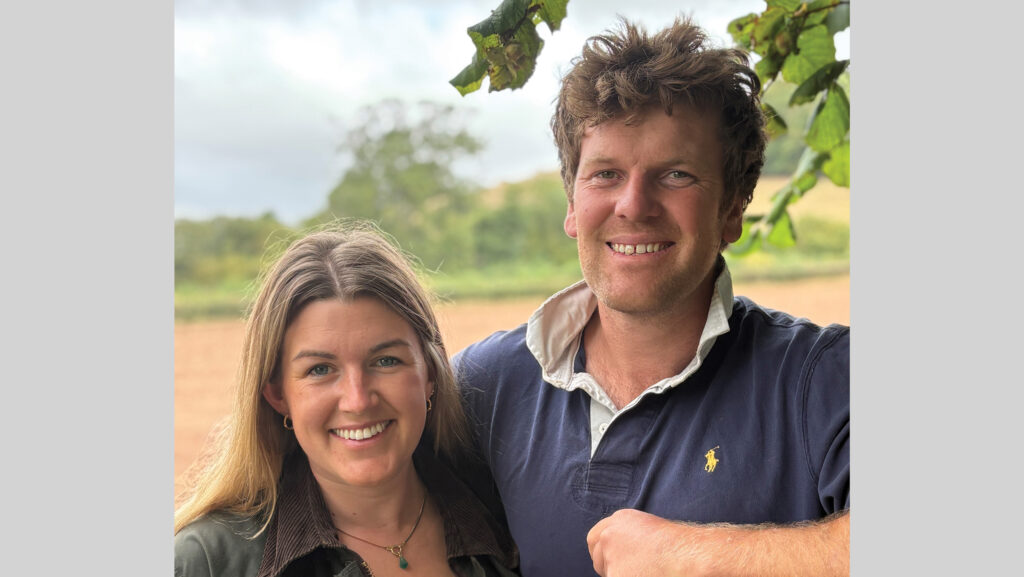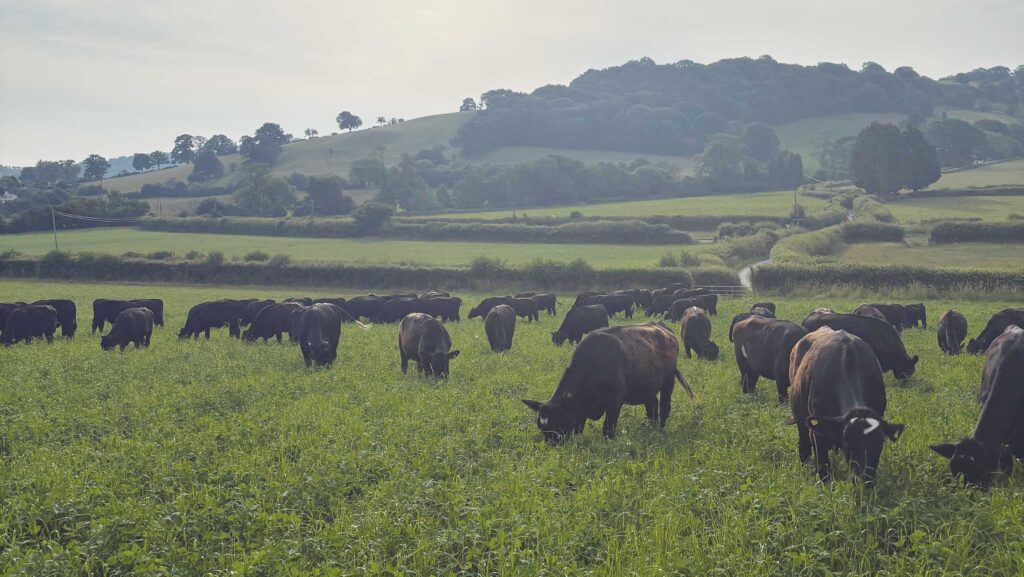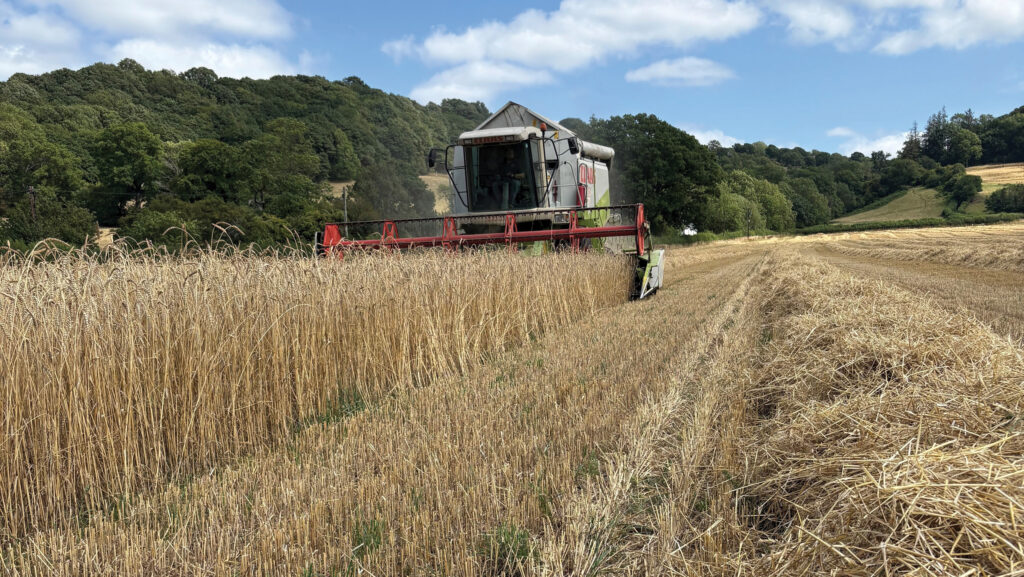How regen principles are building Powys farm’s resilience
 © Rhiannon and Humphrey Wells
© Rhiannon and Humphrey Wells Regenerative farming techniques including adaptive multipaddock grazing and integration of livestock and arable enterprises are helping bolster the resilience of a Powys beef and sheep farm.
See also: How partial budgeting can help bale-grazing decisions
Rhiannon and Humphrey Wells returned to Rhiannon’s family farm alongside her parents, John and Helen, four years ago.
Rhiannon previously worked as a rural surveyor in Oxfordshire, where she met Humphrey, who was assistant farm manager at FAI Farms.
It was during a study trip to regenerative pioneer Greg Hart, at Hawke’s Bay in New Zealand, that Humphrey “got the bug” for regenerative farming.
“I begged Greg to let me stay for two weeks. It’s a cliché, but those two weeks changed my life,” he reflects.
Having worked on intensive dairy farms in New Zealand, he says he realised he had been on “the wrong train” and returned to the UK to take up the role at FAI Farms.
Farm facts
Llwynberried Farm, Llanigon, Powys

© Rhiannon and Humphrey Wells
- 242ha (218ha effective): 113ha on an Agricultural Holding Act tenancy and 129ha rented from eight landlords
- 430 ewes comprising Aberfield, Lleyn and EasyCare
- Lambs sold to Dunbia Taste the Difference averaging 21kg deadweight at R3H grades
- Heavy lambs (58kg plus) sold at Hereford market
- Scanning percentage 165-180%; target 1.5 lambs a ewe put to the tup
- Finishing 150 dairy beef cattle annually for ABP Gamechanger, averaging 300kg deadweight and grades of R4H to 0+3L at 21 months
- Land rising from 152m to 366m above sea level
Reshaping the business
He and Rhiannon farmed Llwynberried Farm, in Llanigon, without changing anything for the first 12 months.
“Greg Hart said when you take on a new farm, you shouldn’t change anything for a year – you should observe how the land responds to the season.
“John had a successful farm, and the business was financially sound,” says Humphrey.
One of their first moves was to add sheep, purchasing the flock from FAI Farms to complement the cattle. Co-grazing, they believed, would deliver better grass utilisation and parasite control.
Participation in a Farming Connect benchmarking group revealed that dairy-beef enterprises consistently outperformed suckler systems.
This insight prompted a major change: replacing John’s 85-cow suckler herd with Aberdeen Angus cross dairy calves.
Recently, calves have been reared at a neighbouring farm and arrive in batches at five months, weighing 120kg. They are finished by 21 months.
Dairy beef is easier to manage at grass, because they can be mobbed in two large groups, compared with autumn and spring sucklers, where five or more groups are often needed.
The integration of the livestock and arable enterprises has been central to the couple’s regenerative journey.
Heavy investment in electric fencing and water infrastructure enabled adaptive multipaddock (Amp) grazing, with Humphrey drawing on his experience of this practice at FAI Farms.

© Rhiannon and Humphrey Wells
Grazing management
The sheep are run in two flocks: replacements are bred from an A flock, which is single-sire mated to Aberfield and Lleyn, while terminal sire Abermax tups are used in the B flock to produce finished lambs.
Ewes lamb outdoors from mid-April and are set stocked for four weeks before switching to mob grazing. Once grass has regrown, cattle graze paddocks for the second round.
Stock are moved every two to three days, with paddocks left to rest for 30-150 days, depending on growth.
“You get that grass spike in the spring, and we allow that to get ahead and grow tall covers – up to 5,000kg dry matter [DM]/ha – and we manage it through trampling,” explains Humphrey.
Trampling protects soils and has proven especially valuable during the drought. Despite grass growth being back 30-40% on the year, the couple only began feeding silage in mid-August.
Cattle have been receiving 2.6kg a head of concentrate, and sheep have been fed 300g a head a day of barley for the first time in six years.
“Our aspiration is to be fully forage-fed,” says Rhiannon, “but profitability and animal welfare must come first. You can’t have thin ewes going into tupping, or one bad year will turn into two.”
Winter feed
Lambs graze herbal leys and red clover silage aftermaths post-weaning, while ewes go onto upland grass or graze winter cereals before tupping. This has been central to reducing inputs.
“It removes any latent plants that have fungal disease and encourages tillering. Where we have done it effectively, it has reduced growth regulator spray and fungicide in the spring,” adds Humphrey.
After tupping, 430 ewes move onto bale grazing on two-day moves. They graze intensively 0.4ha (1 acre) of grass deferred from the summer on the first day, with hay rolled out next day on that same ground.
“It helps us import fertility to the hill ground – the dung is intense and the hay spreads seeds to rejuvenate pastures,” he says.
Cattle are housed during the winter and fed a total mixed ration of red clover, grass silage, home-grown beans and rolled barley.
Pragmatic approach
While the couple fully believe in the principles of regenerative farming, they say profitability must be a priority over purism.
For example, though initially resistant to maize, Humphrey now accepts its place in their system and grew 16ha (40 acres) this year for winter feed.
“I was anti-maize, but it’s cost-effective compared with oats and wholecrop when yielding 15t/acre [37t/ha] or more. Early varieties on good soils following herbal leys work well,” he says.
The herbal leys and red clover, grown on a further 16ha (40 acres), will be in for three to five years before making way for three- to four-year arable cash crops of maize, wheat, beans and wheat.
Arable to grass reseeds are sown using min-till techniques; however, grass to arable reseeds are ploughed rather than sprayed off.
“Ploughing once every five years to a shallow depth is probably better than applying glyphosate,” says Humphrey.
The arable land now averages 80kg of nitrogen/ha, with no insecticides applied in the past four years.
And he believes there is room to lower nitrogen fertiliser further by including more legumes in the rotation.
Heritage wheat, which only receives muck, yields 5.4t/ha, compared with conventional wheat at 9.6t/ha.
However, it costs less to grow, receives a premium and achieves a stronger margin, says Rhiannon.

Heritage wheat © Rhiannon and Humphrey Wells
Future plans
The next step is bale grazing for the cattle to eliminate housing costs. The couple has recently bought 100 EasyCare ewes to lower labour requirements.
Performance will be compared with the existing flock, and results will dictate the future direction of travel on breeding.
Llwynberried is now one of 12 farms involved in McDonald’s extended Amp grazing project, which collects data including soil carbon, water infiltration, and biodiversity.
Humphrey believes such data will be essential in future. “If we are going to maintain the term regenerative, we need evidence that we are truly regenerating the land.”
For now, he and Rhiannon stop short of calling themselves fully regenerative, but believe it is within reach in the coming years and hope the project will help evidence their accomplishment.
“The hardest thing to change is the four inches between your ears – that mindset change is crucial. You must look at the farm as a whole ecosystem,” Humphrey says.
